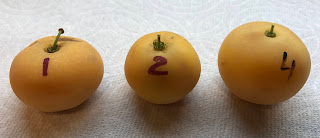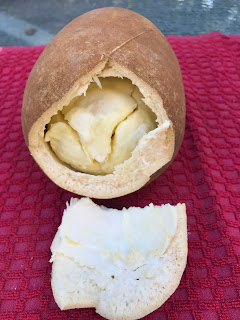This month I don't have any avocados on my trees. When my Mexicola tree was young, it used to fruit into November, but this year it started very early, as I remember picking the first fruits in August. Most of Mexicola fruits we harvested by early October. On October 25, I picked the last fruit from my tree. It was a Brazos Belle fruit from a recent graft onto my large Mexicola. The fruit was good, but not as intensely flavored as Mexicola.
In November, I started to buy store avocados. The first pack of small fruit from a fruit stand made me question if those were even Hass. They were watery, but OK in flavor. The next pack of medium sized Hass from a large store seems to be even worse. Today I compared one of the Hass fruits with a fruit of Mexican cultivar that my neighbor gifted me.
The Mexican cultivar definitely wins, although it is not very oily, not as nutty as Mexicola, but overall a better one in this comparison. My neighbor does not know the cultivar name. I thought that this is Mexicola Grande, but not sure about it anymore. More fruits from this tree are in the last picture. Please comment if you know the variety name.




















































